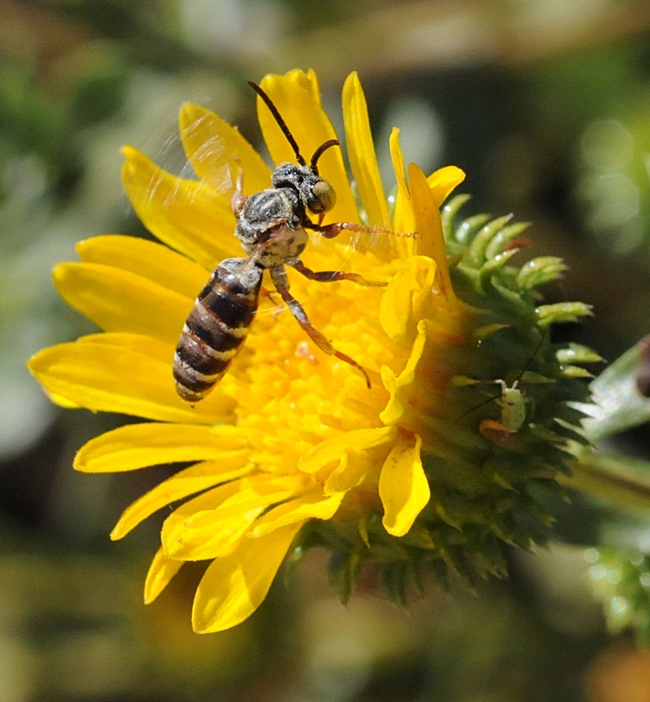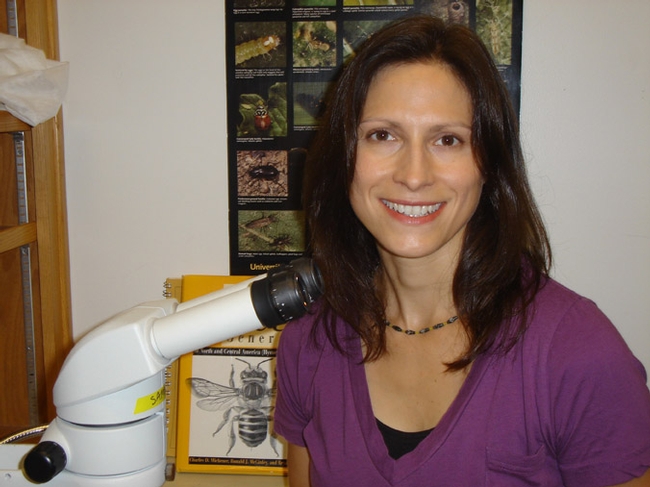Let's hear it for the hedgerows.
Picture native plants, shrub and ground cover bordering agricultural fields and providing habitat for native bees and other pollinators.
Not just bed and breakfast, but bed, breakfast, lunch and dinner. And snacks in between.
Enter population biologist Lora Morandin, with the College of Natural Resource at the University of California, Berkeley.
She'll speak on "Restoring Ecosystem Services in Agricultural Landscapes” from 12:10 to 1 p.m. Wednesday, May 18 in 122 Briggs at UC Davis. This is the last in a series of spring seminars hosted by the UC Davis Department of Entomology.
Morandin's research involves assessing the impacts of pollinator, pest, parasitoid, and predator arthropod populations on Yolo County’s native-plant hedgerows.
“In intense agricultural landscapes, essential ecosystem services are compromised, threatening production and necessitating external inputs,” Morandin said. “The need for agriculture to be more sustainable and less reliant on external inputs, such as pesticides and managed pollinators, is increasingly being recognized. Yet, there is little information on how restoration practices impact beneficial insect communities and ecosystem services in adjacent production areas.”
Her work involves comparing beneficial and pest arthropod populations in mature and newly established hedgerows to weedy, minimally managed "control" areas.
“Mature hedgerows and controls are located adjacent to processing tomato and we are assessing pest control and pollination in fields,” said Morandin, who received her doctorate in biology from Simon Fraser University, Burnaby, British Columbia. “In newly established hedgerows, monitoring began before restoration--in 2006--allowing us to examine beneficial arthropod reassembly over time. Additionally we are assessing source/concentrator dynamics of restoration and modeling economic costs and benefits of restoration.”
Initial data, said Morandin, suggests that beneficial insect populations can be reassembled with native plant habitat creation. “Examination of ecosystem service benefits and economic analyses are ongoing.”
Since becoming a National Science Foundation postdoctoral visiting scholar at UC Berkeley in 2009, she has pursued the general topic of restoration of ecosystem services in agricultural landscapes. She served as a Natural Sciences and Engineering Research Council (NSERC) postdoctoral fellow at UC Berkeley from 2007 to 2009, when she researched the re-establishment of beneficial insect populations in degraded agricultural landscapes.
The beneficial insects include the cuckoo bee (below). UC Davis native pollinator specialist Robbin Thorp, emeritus professor of entomology, identified it as in the genus Triepeolus (maybe Epeolus) and "probably a male."
Attached Images:

Cuckoo bee on gum plant in Yolo County hedgerow. (Photo by Kathy Keatley Garvey)

Population biologist Lora Morandin of UC Berkeley will discuss her research on hedgerows on May 18 at UC Davis.